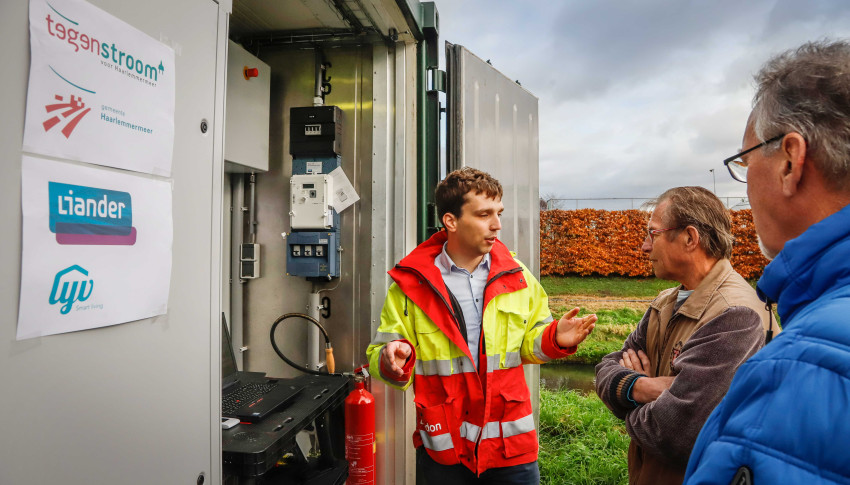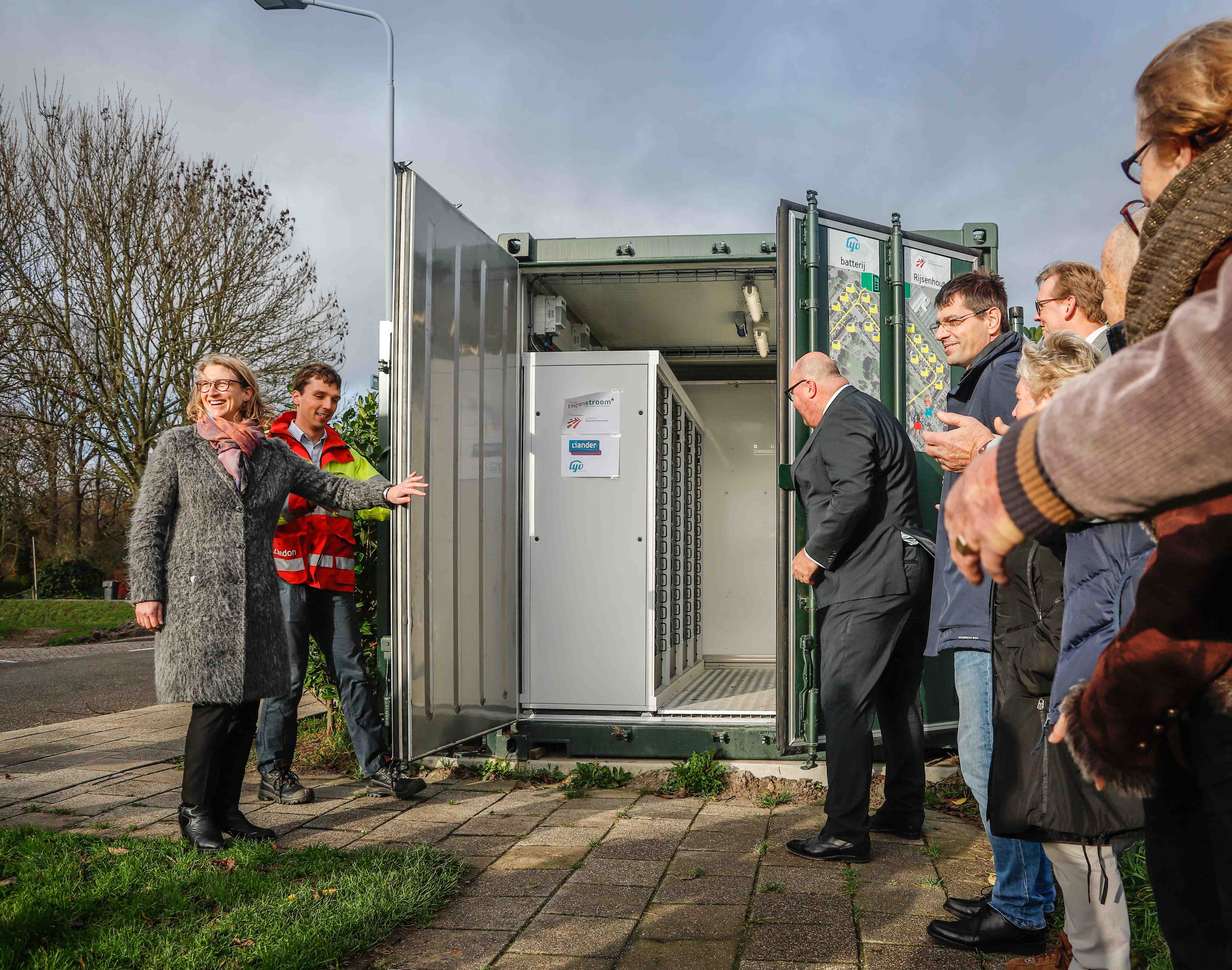
Communal battery for solar power in Rijsenhout
This week, the small town of Rijsenhout saw the launch of the communal battery. This battery collects the peak power load from the solar panels and enables trading on the electricity exchange.
The Li-ion communal battery is connected via a low-voltage network to 35 residents in the village that have solar panels on their roof. For Liander, one of the initiators, one benefit of the battery is that the existing power grid doesn't require upgrading. ‘The battery collects the peak power loads’, said Jan-Willem Eising, of the grid operator.
My battery
Although the battery has been fulfilling this function already for six months, it's now connected directly via a smart meter to the 35 participants. They each have access to a portion of the total storage capacity of the battery, namely 3 kWh of the total battery capacity of 128 kWh. ‘This gives the users a greater sense of the battery being ‘mine’, rather than being plugged into a communal battery where there's no overview of your usage or that of your neighbours.’ It's as if you have your own ‘power wall’, but in the communal battery and not in the meter cupboard.
Liander wants to know what the consequences of this are for the stability of the power supply. ‘It's possible that one participant will have a full battery portion, while another's is empty.’

Social housing
Via Lyv Smart Living, a platform for Smart Home applications, residents gain insight into the way in which they use ‘their’ battery: how much do my solar panels generate, how much do I use directly myself, what enters the battery, how much of that do I use? The residents of the social housing obtained the solar panels via Tegenstroom, a local energy supplier that leases the solar panels to the residents.
It is also the intention that a market party, an aggregator, displays interest to use the battery for its capacity portfolio on the electricity market. Eising: ‘Based on weather forecasts, we can predict whether the residents will need their battery. In winter they almost certainly don’t, so the battery capacity is then free for trading.’ Liander wants to ascertain to what degree this conflicts with the demand for grid stability in practice.
The odd peak
Over the last year, it turns out that the solar panels, with a total capacity of 70 kW, have caused peaks of 250 Volts in the low-voltage grid. ‘This occurs primarily in June when it's a little cooler and the sun disappears behind the clouds.’ The battery didn't have any problems coping with these peak loads.
The trial in Rijsenhout will last a year. ‘We wanted to test it through four seasons,’ said Eising.
Some five years ago there was a trial with a communal battery in Etten-Leur, which Liander was also involved with. Eising: ‘That trial was only about the effect of solar power on the transformer, but in this trial the residents themselves also play a key role.’
Newsletter
If you found this article interesting, then subscribe for free to our weekly newsletter.
Meer artikelen

Een AI-fabriek in Groningen

Gezondheid meten via zweetdruppels
Nieuwste artikelen

Een AI-fabriek in Groningen






